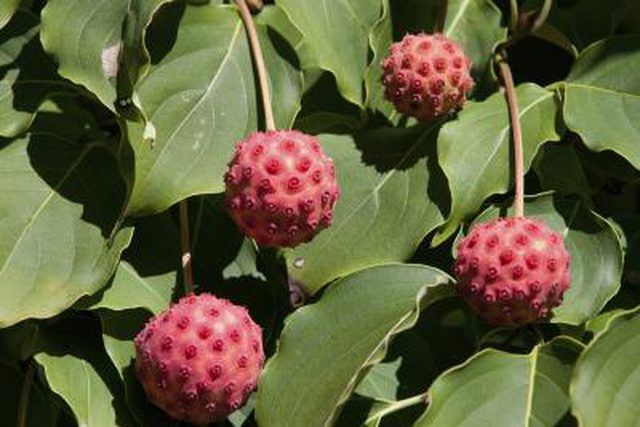Bulbs
Flower Basics
Flower Beds & Specialty Gardens
Flower Garden
Garden Furniture
Garden Gnomes
Garden Seeds
Garden Sheds
Garden Statues
Garden Tools & Supplies
Gardening Basics
Green & Organic
Groundcovers & Vines
Growing Annuals
Growing Basil
Growing Beans
Growing Berries
Growing Blueberries
Growing Cactus
Growing Corn
Growing Cotton
Growing Edibles
Growing Flowers
Growing Garlic
Growing Grapes
Growing Grass
Growing Herbs
Growing Jasmine
Growing Mint
Growing Mushrooms
Orchids
Growing Peanuts
Growing Perennials
Growing Plants
Growing Rosemary
Growing Roses
Growing Strawberries
Growing Sunflowers
Growing Thyme
Growing Tomatoes
Growing Tulips
Growing Vegetables
Herb Basics
Herb Garden
Indoor Growing
Landscaping Basics
Landscaping Patios
Landscaping Plants
Landscaping Shrubs
Landscaping Trees
Landscaping Walks & Pathways
Lawn Basics
Lawn Maintenance
Lawn Mowers
Lawn Ornaments
Lawn Planting
Lawn Tools
Outdoor Growing
Overall Landscape Planning
Pests, Weeds & Problems
Plant Basics
Rock Garden
Rose Garden
Shrubs
Soil
Specialty Gardens
Trees
Vegetable Garden
Yard Maintenance
Dogwood Tree Leaf Identification
Dogwood Tree Leaf Identification. Like flashes of white lace peeking out from the forest understory, flowering dogwoods are a familiar springtime sight throughout the southeastern United States. Dogwoods are found growing naturally in the wild and are widely available for sale through gardening centers. Long prized for their showy flowers, dogwoods...
Like flashes of white lace peeking out from the forest understory, flowering dogwoods are a familiar springtime sight throughout the southeastern United States. Dogwoods are found growing naturally in the wild and are widely available for sale through gardening centers. Long prized for their showy flowers, dogwoods are a favorite choice for landscaping. Although there are numerous varieties, dogwoods are not really difficult to identify.
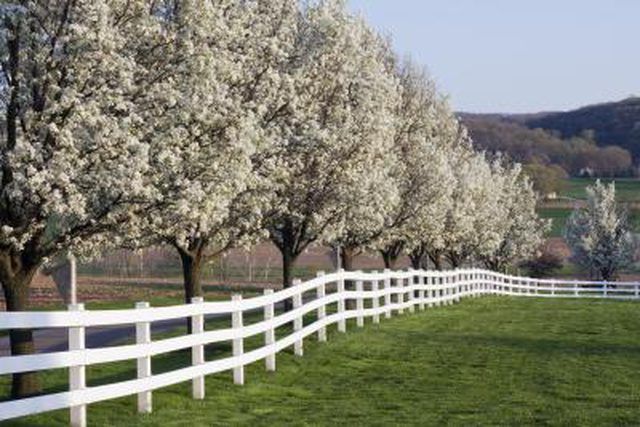
A member of the family Cornacia and the genus Cornus, the dogwood is a deciduous woody tree or shrub native to both North America and Asia. The dogwood is known for its beautiful white, pink or red flowers in springtime. Cornus florida, or flowering dogwood, is one of the most common species found in hardwood forests throughout the southeastern United States. According to the Virginia Department of Forestry, the flowering dogwood is a relatively small tree, growing to about 20 to 30 feet tall with a trunk diameter of about 6 to 8 inches.
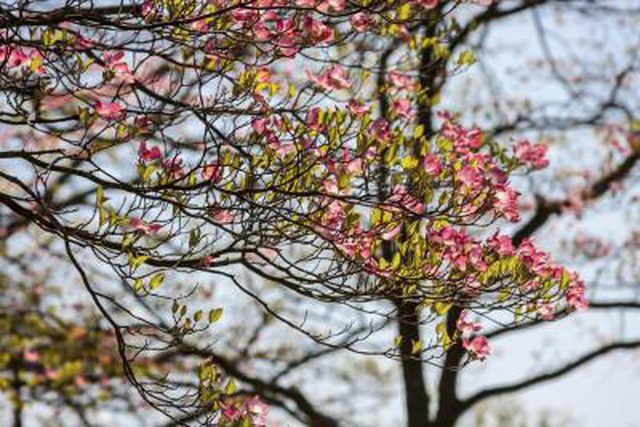
The first clue in leaf identification is determining the type of leaf. The dogwood is a deciduous broadleaf tree, meaning it loses its leaves in the winter. It is considered a "broadleaf" because its leaves are flat and thin as opposed to a fir or spruce, which bear evergreen needles.
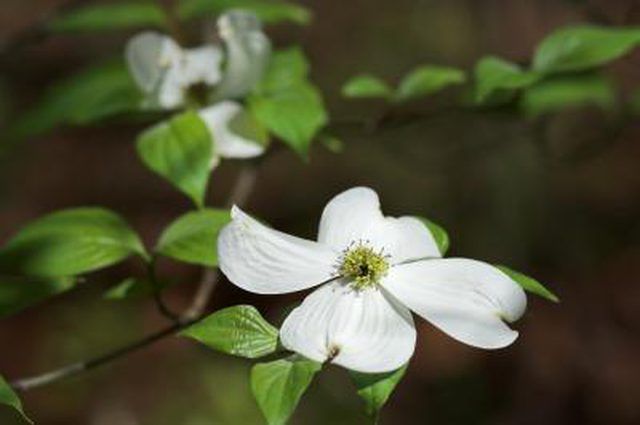
Dogwood leaf arrangement is considered "opposite" because leaves are attached in pairs on opposite sides of the stem. The dogwood has a "simple leaf," meaning one undivided blade grows directly out of a stalk.
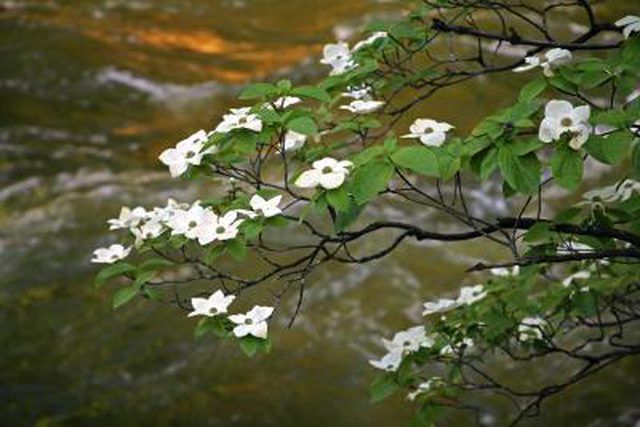
Although there are many species of dogwoods, the leaves are all similar. The dogwood leaf is about 3 to 5 inches long, ovate (wider at the base than tip) and somewhat pointed in shape, with smooth or wavy edges. The leaf has a center vein with curved veins that run parallel to the leaf edges. It does not have lobes like an oak leaf nor are the edges serrated or saw-toothed.
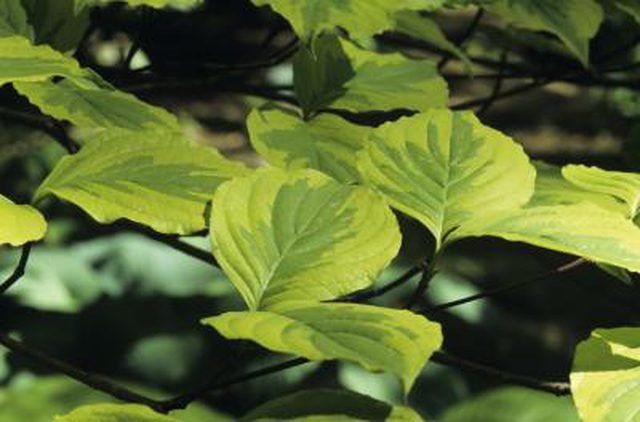
Dogwood leaves are green in the spring and summer with a silver-green underside. In the fall, dogwoods leaves turn a brilliant crimson, red-yellow or red-purple.
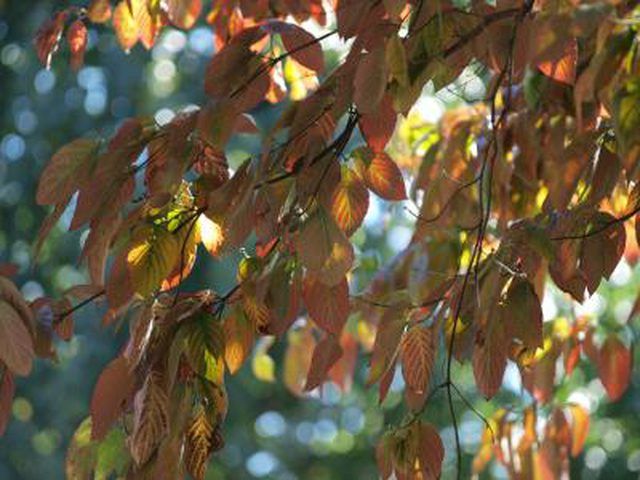
Flowers and bracts (a type of leaf) appear in mid-spring. The flowers are small, tight greenish yellow clusters surrounded by four petal-like bracts which many people mistake for flower petals. The bracts are usually white (sometimes pink or red) and about 2 inches in diameter with a characteristic notch or indentation at the end of the bract.
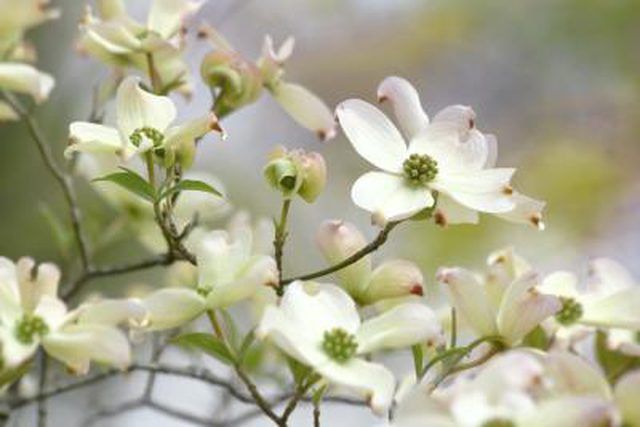
In the fall, dogwood trees bear clusters of bright red berries which are prized by wild birds and squirrels alike.
